Related research and data
Charts
- Average learning outcomes
- Average learning outcomes vs. GDP per capita
- Average learning-adjusted years of schooling
- Average performance of 15-year-old girls and boys in mathematics
- Average performance of 15-year-old girls and boys in reading
- Average performance of 15-year-old girls and boys in sciences
- Average performance of 15-year-olds in mathematics
- Average performance of 15-year-olds in mathematics, reading, and science
- Average performance of 15-year-olds in reading
- Average performance of 15-year-olds in sciences
- Average years of schooling
- Average years of schoolingUNDP
- Average years of schooling for men
- Average years of schooling for women
- Average years of schooling vs. GDP per capita
- Average years of schooling vs. expected years of schooling
- Children and adolescents out of school
- Completion rate of lower-secondary education
- Completion rate of primary education
- Completion rate of upper-secondary education
- Duration of compulsory education
- Duration of pre-primary education
- Expected years of schooling
- Expected years of schooling vs. share in extreme poverty
- Gender gap in primary, secondary and tertiary education
- Gender parity in net enrolment rates in lower-secondary education
- Gender parity in net enrolment rates in primary education
- Gender parity in primary school life expectancy
- Gender ratio for average years of schooling
- Girls and boys of primary school age who are out of school
- Girls and boys who are out of school
- Girls of primary school age who are out of school, by world region
- Gross enrolment ratio in pre-primary education
- Gross enrolment ratio in primary education
- Gross enrolment ratio in secondary education
- Gross enrolment ratio in tertiary education
- Learning adjusted years of schooling
- Learning adjusted years of schooling in girls and boys
- Learning outcomes, minimum vs. advanced achievement
- Literate and illiterate world population
- Lower-secondary completion rate, adjusted gender parity index
- National average learning outcomes1985 vs. 2015
- Net attendance rate of primary school
- Number of adults with no formal education by region
- Official entrance age to compulsory education
- Official entrance age to pre-primary education
- Percentage of primary schools with toilets
- Percentage of teachers in lower-secondary education who are qualified
- Percentage of teachers in pre-primary education who are qualified
- Percentage of teachers in primary education who are qualified
- Percentage of teachers in upper-secondary education who are qualified
- Population having attained at least some formal education
- Primary completion rate
- Primary completion rate, adjusted gender parity index
- Primary, secondary and tertiary education enrolment and completion rates
- Primary-school-age children who are out of school by world region
- Projections of share of the population with no formal educationIIASA
- Proportion of children aged 3-5 years who are developmentally on track
- Proportion of male vs. female youth and adults with ICT skills in using presentation software
- Public spending on education as a share of GDP
- Pupils per qualified teacher in pre-primary education
- Pupils per qualified teacher in primary education
- Quality vs. quantity of schooling
- Scheduled teaching time that teachers are in the classroom
- Share enrolled in private institutions at the pre-primary education level
- Share enrolled in private institutions at the primary education level
- Share of 15-year-olds in the highest mathematics score level, girls vs. boys
- Share of academic staff in tertiary education who are female
- Share of adolescents who are not in secondary school
- Share of children in primary school age who are in school
- Share of female graduates from science and technology programs in tertiary education
- Share of population with no formal education
- Share of primary school teachers who are female
- Share of primary schools with access to drinking water
- Share of primary-school-age children who are out of school
- Share of primary-school-age children who are out of school vs. GDP per capita
- Share of schools with access to basic drinking water
- Share of schools with access to electricity
- Share of schools with access to computers for teaching
- Share of schools with access to single-sex basic sanitation
- Share of secondary school teachers who are female
- Share of students achieving advanced learning outcomes
- Share of students achieving intermediate learning outcomes
- Share of students achieving minimum learning outcomes
- Share of students at the end of lower-secondary education achieving minimum math proficiency
- Share of students at the end of lower-secondary education with minimum reading proficiency
- Share of students at the end of primary education achieving minimum math proficiency
- Share of students at the end of primary education achieving minimum reading proficiency
- Share of students from abroad
- Share of students in early primary education achieving minimum reading proficiency
- Share of students studying abroad
- Share of teachers in primary education who are trained
- Share of teachers in secondary education who are qualified
- Share of teachers in secondary education who are trained
- Share of the population who completed lower-secondary education
- Share of the population with post-secondary education
- Share of the population with tertiary education
- Share of the world's population with formal basic education
- Share of women with no formal education
- Total net enrollment rate in primary education
- Upper-secondary completion rate, adjusted gender parity index
- World population by level of educationwith projections

